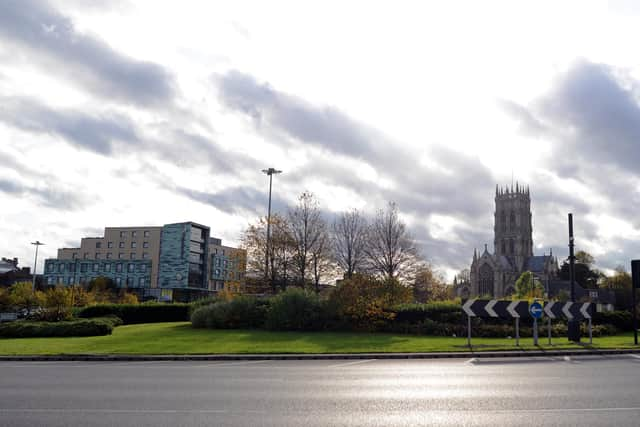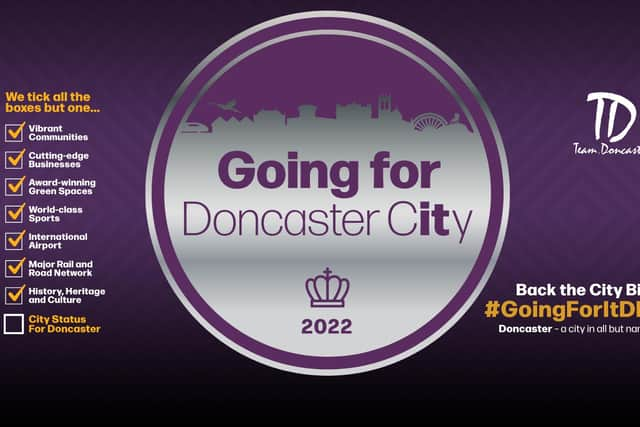Doncaster city status - six major ways winning status would benefit our town
and live on Freeview channel 276
Six major ways winning status would benefit our town:
1. Doncaster is more likely to attract more visitors, which in turn, will improve the tourism offer for local people generating more choice of things to do, where to eat and shop and support local businesses.
2. To attract greater levels of economic investment, creating new jobs, and further redeveloping and regenerating the borough.


Advertisement
Hide AdAdvertisement
Hide Ad3. To gather stronger momentum and wider backing for key projects, such as a new hospital proposal, a University and airport station rail link.
4. To attract key conferences, festivals, and concerts, with nationally recognised artists and a richer program of cultural events.
5. To create more skilled jobs, allowing more young people to stay, live and work in the area, rather than them moving away to other localities.
6. Doncaster would gain a stronger voice in shaping both the local, regional, and national agenda to get more of what the borough deserves and to support the delivery of residents’ priorities.


Advertisement
Hide AdAdvertisement
Hide AdHere are just a few reasons Doncaster punches above its weight.
Size
Doncaster already has a population of more than 312,000 and so is operating as a city in terms of both population and services that can be accessed here already. New developments are planned, with a growth target over 18,400 new homes to be built by 2035.
It has a vibrant local economy worth around £6 billion with over 9,000 businesses.
A Connected Place
Doncaster is home to an international airport, providing connections worldwide.
Advertisement
Hide AdAdvertisement
Hide AdOne of the busiest rail stations on the East Coast Main line is situated in Doncaster, sitting at the confluence of several others and providing fast rail links across the UK. Trains from Doncaster to London are fast and frequent.
Doncaster is also located at the centre of the country’s motorway network, making it a Connected City at the heart of the UK, with easy access to the M18, M1, A1(M), M62 and the M180.
Eighty-seven percent of the UK population is reachable in four hour’s drive time from Doncaster
Today, Doncaster is an important town for connectivity with the second largest representation of transport and storage jobs in the Yorkshire and Humber region.
History and Heritage
Advertisement
Hide AdAdvertisement
Hide AdDoncaster was founded by the Romans in 71AD, when it was known as ‘Danum’ and was then listed as one of Britain’s 28 cities.
In 1194 Richard the Lionheart granted Doncaster its first charter, followed by a royal markets charter in 1248.
Back in the 18th century, Doncaster Town Centre was a significant stop over point between London and Edinburgh, which created an industry in coach building and horse breeding. It is fitting that the oldest horse racing classic in the world is hosted in Doncaster, the St Leger Stakes first held in 1776.
The 12th century medieval Conisbrough Castle inspired Sir Walter Scott’s novel, ‘Ivanhoe – the first citation of Robin Hood, meaning Robin Hood came from Doncaster, rather than Nottingham.
Advertisement
Hide AdAdvertisement
Hide AdIn the 19th century ‘the Plant’ railway works were established in Hexthorpe where the Stirling Single, Flying Scotsman and Mallard were designed and built.